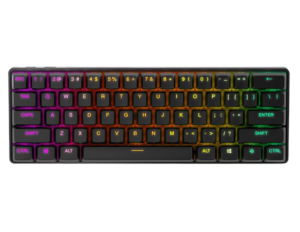60% of the time, it works every time.
SteelSeries Apex Pro Mini Wireless review: Undersized overkill
Are you a gamer who’s comfortable paying (a lot) for a second gaming-centric keyboard? That’s the big underlying question of the SteelSeries Apex Pro Mini Wireless. This 60% keyboard is as expensive as it is impractical as an everyday keyboard. But, boy oh boy, does it have some incredible features if you’re not put off by the price or some of the size limitations.
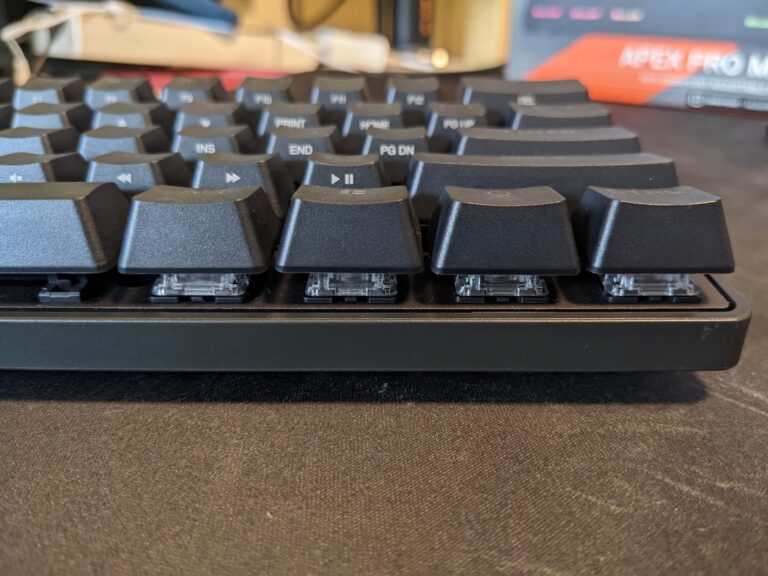
SteelSeries Apex Pro Mini Wireless value for money
The price for the SteelSeries Apex Pro Mini Wireless is ridiculous. Like, $499RRP ridiculous. All of the bells and whistles aside, this is easily $200 pricier than other 60% wireless keyboards from competitors. You might be able to grab it for closer to $400, but the SteelSeries Apex Pro Mini Wireless still feels cost prohibitive, even for a niche offering.
SteelSeries Apex Pro Mini Wireless gaming and everyday use

The SteelSeries Apex Pro Mini Wireless is the first 60% keyboard I’ve taken for a spin. While I get the logic of a tenkeyless keyboard, shedding the top-row F-keys, conceptually, means you lose more in easy-to-reach functionality than you gain in desk real estate. It doesn’t help that the SteelSeries Apex Pro Mini Wireless isn’t exactly super lightweight.
Admittedly, the SteelSeries Apex Pro Mini Wireless has performance in all the right gaming areas. By default, keystroke actuation is set to 1.8mm, which combos nicely with the 0.54ms response time on 2.4GHz wireless. That makes for an incredibly responsive keyboard that feels great and isn’t restricted by a cable.
The challenge for me, though, was testing in Battlefield games. With default settings, Battlefield games use F-keys, which the SteelSeries Apex Pro Mini Wireless doesn’t have. You can hold down the SteelSeries-branded function key to modify buttons, which converts the top-row numerical keys to F-keys. That said, the function key is on the right of the keyboard, so not easily within reach with typical WSAD controls. This function key is also used for other keys missing by the nature of the 60% design, and while I appreciate the workaround, it’s not viable for all games without rebinding.
It was even trickier to use the SteelSeries Apex Pro Mini Wireless as an everyday keyboard which, admittedly, isn’t the role of a 60% keyboard. That’s not to say you couldn’t adapt, but there’s a steep learning curve for muscle memory if you’re used to a full-sized or even tenkeyless keyboard.
SteelSeries has bragging rights to being the original esports-focused peripherals brand, which started in Denmark in 2001. Despite being a popular provider of esports peripherals, SteelSeries makes a range of keyboards, mice and headsets for everyday gamers, too.
SteelSeries Apex Pro Mini Wireless versatility
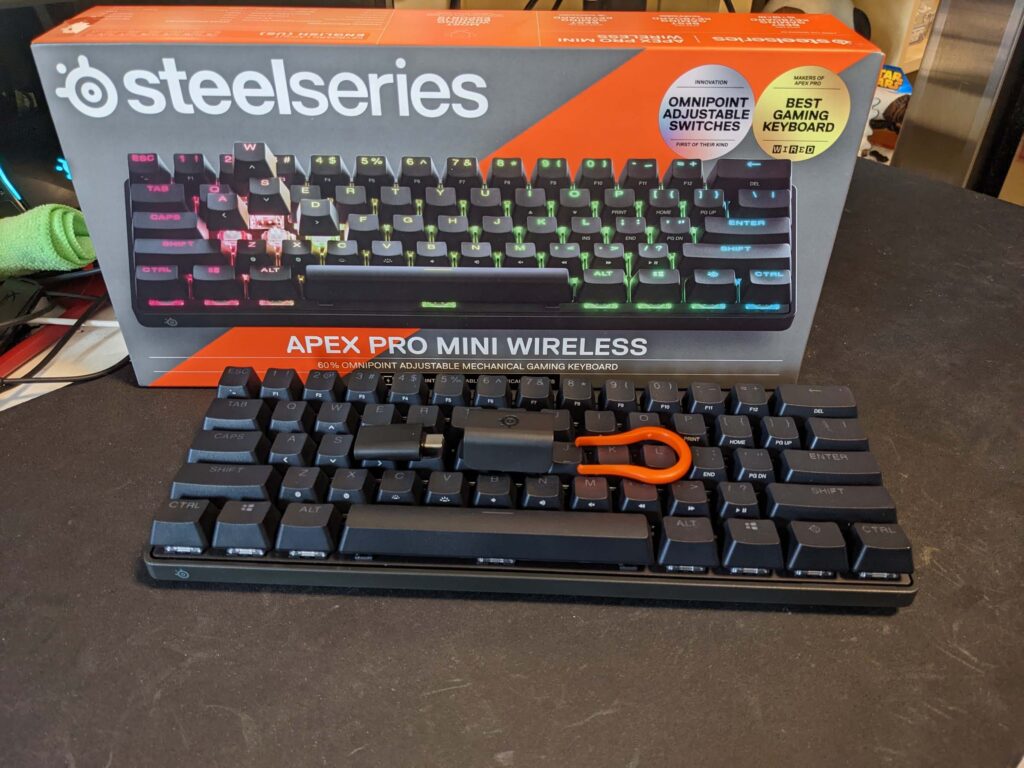
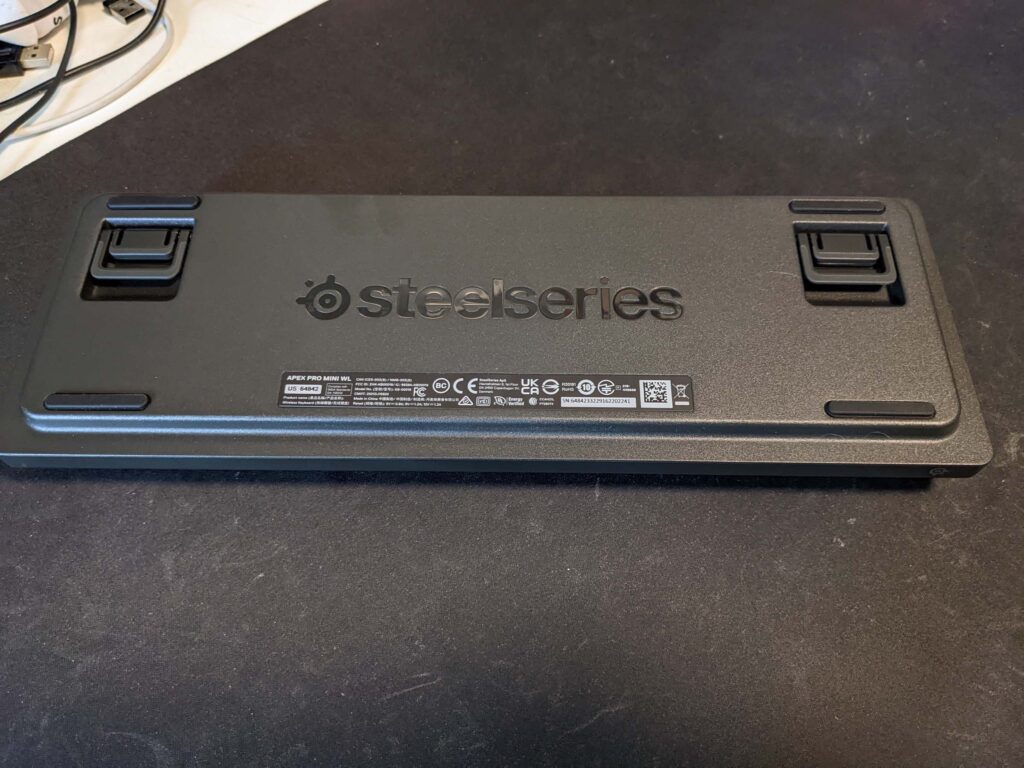
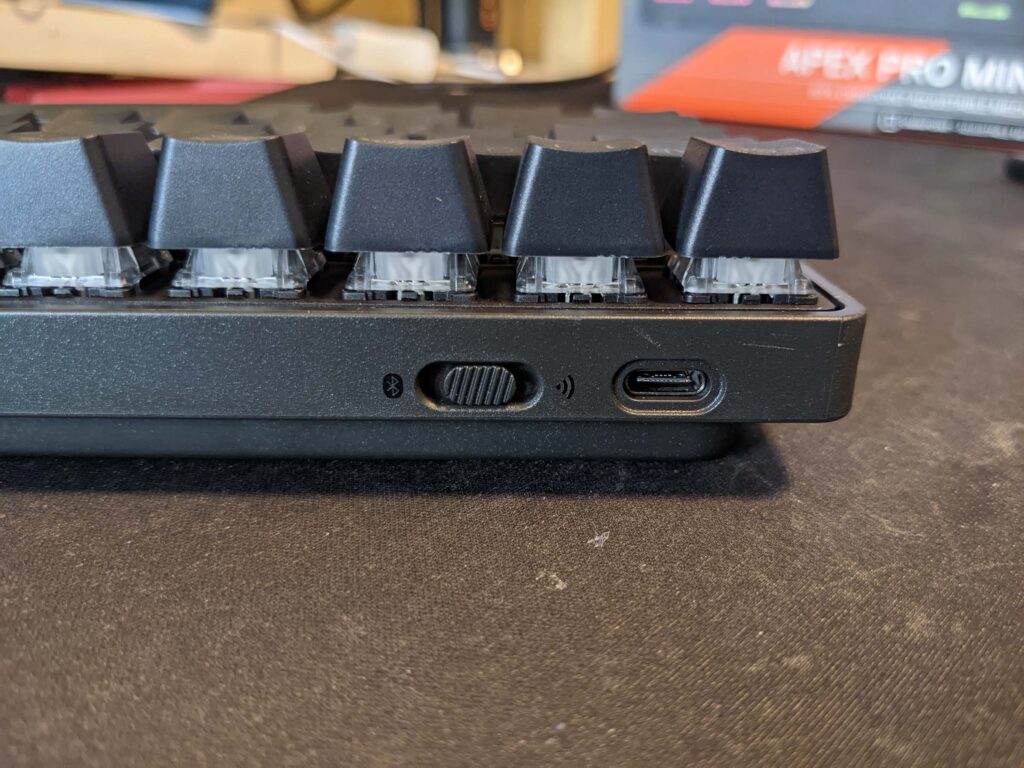
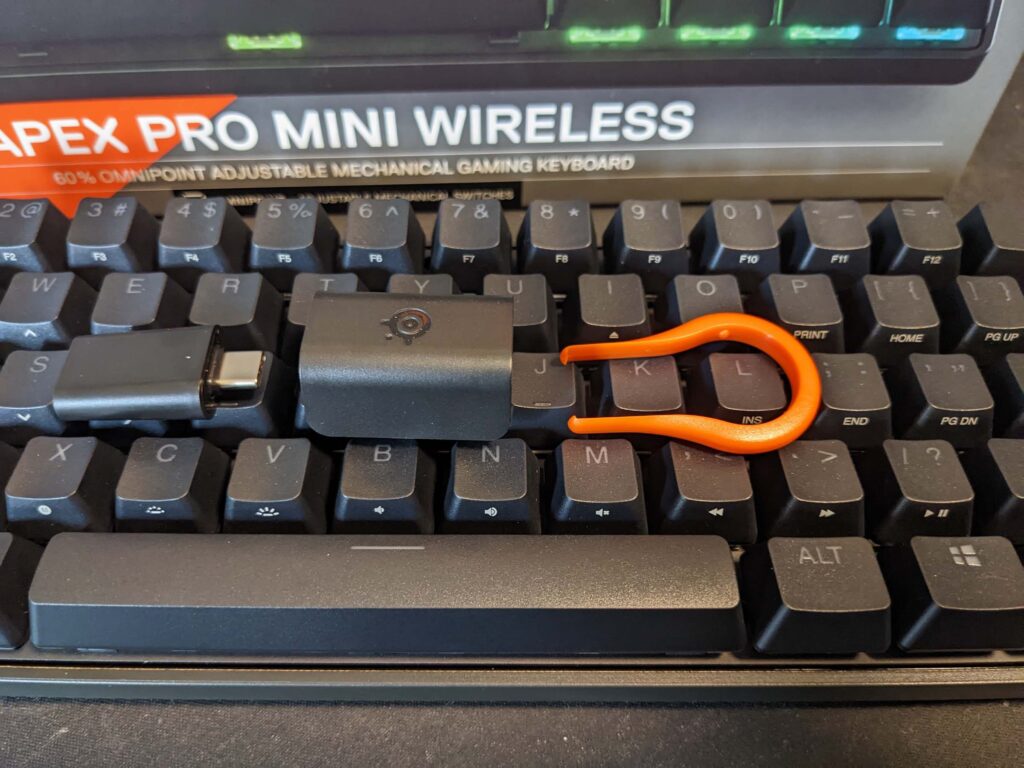
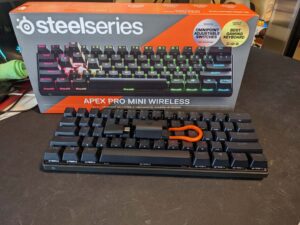
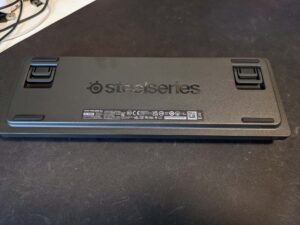
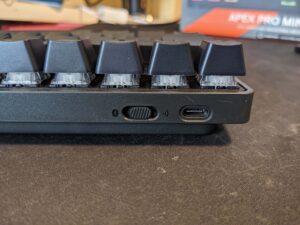
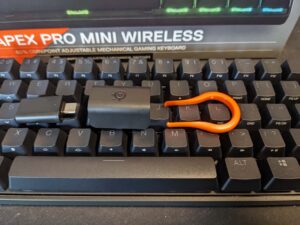
For starters, the SteelSeries Apex Pro Mini Wireless is rated for up to 40 hours of battery life by SteelSeries, and I’d back that claim. After a full charge, I’ve effectively left it in 2.4GHz mode for around 11 days. While it’s not being used all the time, it handles standby well to preserve battery life.
If you forget to charge or run out of juice, there’s a USB-C cable on hand for charging. Plug it into the top left of the keyboard, which is next to the wireless switch. Move that switch hard left for 2.4GHz or right for Bluetooth. Good luck trying to put it in the middle to turn the keyboard off without stuffing it up at least once.
Bluetooth means the SteelSeries Apex Pro Mini Wireless can work with any Bluetooth device that accepts keyboard input, which worked great with an Android tablet in my tests. For gamer purists, 2.4GHz offers the lowest latency, which is best used with 0.2mm actuation for the speediest inputs. That’s sensitive enough to activate with the lightest of touches, which will lay bare all of your terrible keystroke inaccuracies.
All of this is controlled within the SteelSeries Engine software, and there’s an impressive level of control in here. Change the actuation of all keys or on a per-key basis, including impressively granular options like dual actuation, dual bindings and customisable meta bindings.
Is the SteelSeries Apex Pro Mini Wireless worth buying?
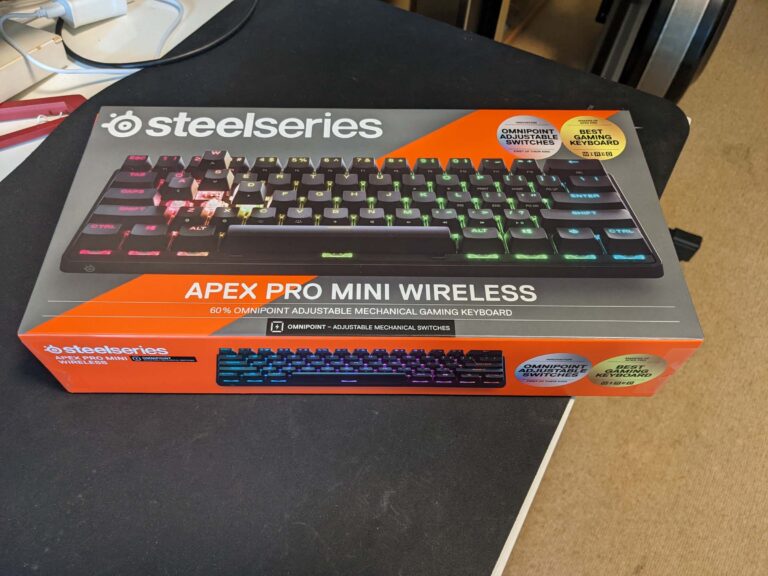
The SteelSeries Apex Pro Mini Wireless is an impressive piece of keyboard technology. It’s a wireless 60% keyboard powerhouse with an incredible degree of user control. But it’s way too expensive for a 60% keyboard that’s impractical for everyday use (unless you embrace the learning curve).
How we review keyboards
We review keyboards by testing them for extended periods. Where possible, with tenkeyless and full-sized keyboards, we use them as our primary keyboard during testing periods. Keyboards are appraised in terms of how seamlessly they slot into everyday life.
For gaming keyboards specifically, we test across everyday and gaming scenarios. We acknowledge that while gaming purists may be okay with switching between everyday and gaming mice, it’s more of an ask for a gamer to own multiple keyboards. Particularly for gaming keyboards, mechanical switches are evaluated in the context of the distinct sound and feel of the three broad types of keys.
Generally, keyboards are also appraised in terms of their comfort and practicality. For comfort, we take note of any keys that are difficult to reach or any soreness after extended use. An included wrist rest is a big plus on the ergonomics front. For the practical side, we factor in additional keys, including macros and media controls, then appraise things such as battery life and versatility (wired, Bluetooth and 2.4GHz) for relevant models.
SteelSeries Apex Pro Mini Wireless FAQs
The SteelSeries Apex Pro Mini Wireless is an incredibly fast and responsive keyboard. Key actuation can be set to 0.2mm, while wireless has a speedy 0.54ms response time.
Yes, the SteelSeries Apex Pro Mini (wired) and Apex Pro Mini Wireless are the 60% keyboard you’re looking for if you want the Apex Pro but don’t want a full-size keyboard.
The SteelSeries Apex Pro Mini Wireless supports both Bluetooth (greater device versatility) and 2.4GHz (more responsive) for wireless connectivity.
Related Articles




